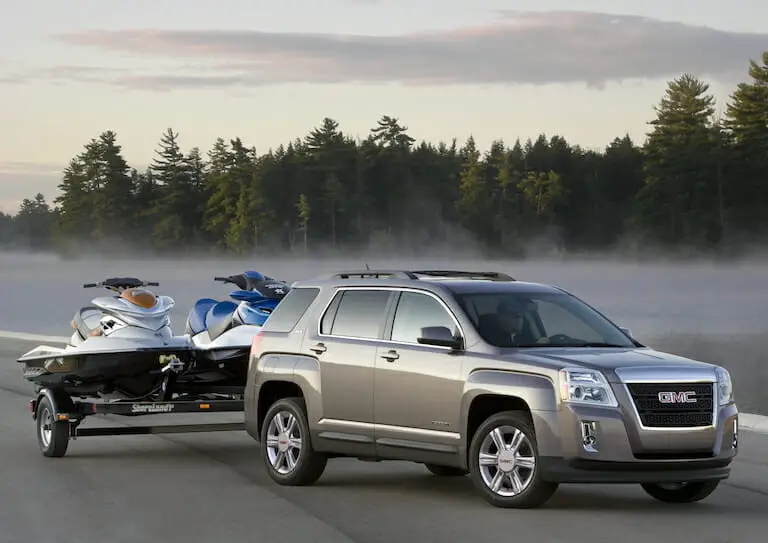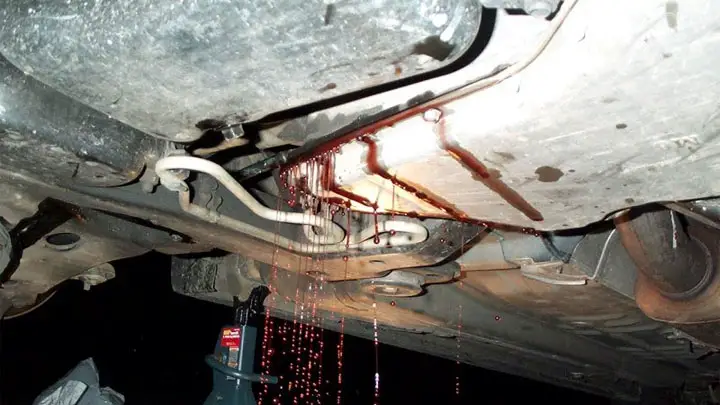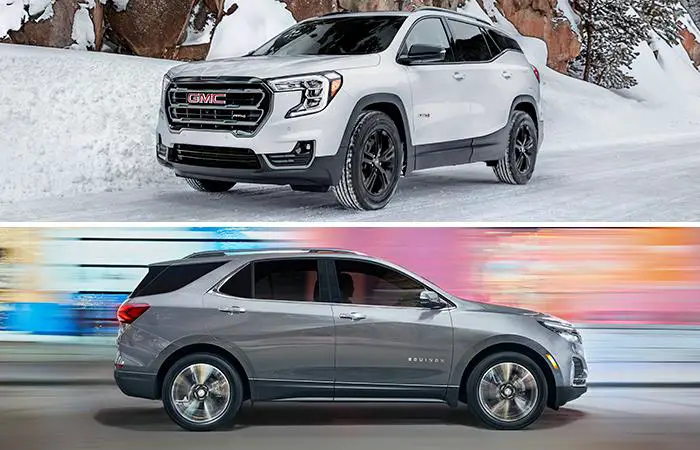If you own a 2015 GMC Terrain, you may have heard about the engine recall that affects this model.
But what does it mean for you and your vehicle?
How can you find out if your car is affected and what steps should you take to fix it?
In this comprehensive guide, we will answer all these questions and more.
We will explain the causes and consequences of the 2015 GMC Terrain engine recall, how to check your VIN, and how to contact your dealer for a free repair.
By the end of this article, you will have a clear understanding of what to do if your 2015 GMC Terrain has an engine problem.
What is the 2015 GMC Terrain engine recall and why is it important?
The 2015 GMC Terrain engine recall is a safety issue that affects certain vehicles with a 2.4L engine.
The recall is important because the engine may consume excessive amounts of oil, leading to a risk of catastrophic engine damage or stalling.
The engine problem may also cause the check engine light to illuminate, reduce engine performance, or increase emissions.
The recall affects about 1.4 million vehicles worldwide, including 2010-2017 GMC Terrain models.
How to check if your 2015 GMC Terrain is affected by the engine recall?
To check if your 2015 GMC Terrain is affected by the engine recall, you need to find out your vehicle identification number (VIN). The VIN is a 17-digit code that uniquely identifies your car. You can find it on the driver’s side dashboard, the driver’s door jamb, or your registration documents.
What are the risks and symptoms of the engine problem in the 2015 GMC Terrain?
- Engine Coolant Leak (NHTSA Campaign ID 18V293)
Risks
Fire: The primary risk is a potential fire if coolant leaks onto the hot exhaust manifold. This can occur due to a faulty engine block casting that allows coolant to seep out.
Engine damage: Leaking coolant can also lead to overheating and engine damage if left unaddressed.
Symptoms
Coolant smell: You might notice a sweet, burning smell in the cabin or around the engine compartment, indicating a coolant leak.
Low coolant level: Check your coolant level regularly. If it’s consistently low, it could be a sign of a leak.
Visible leak: Inspect around the engine block and exhaust manifold for any visible signs of coolant leakage.
Engine overheating: If the coolant leak is severe, your engine might overheat, triggering a warning light on your dashboard.
- Engine Oil Cooler Line (NHTSA Campaign ID 19V484)
Risks
Engine damage: If the engine oil cooler line rubs and leaks, it can lead to decreased engine lubrication. This can cause excessive wear and tear on internal components, potentially leading to engine failure.
Oil pressure warning: You might see an oil pressure warning light on your dashboard if the leak is significant.
Burning oil smell: A burning oil smell can indicate an oil leak, including from the cooler line.
Smoke from the engine: In severe cases, you might see smoke coming from the engine bay due to burning oil.
What are some tips and precautions to avoid engine issues in the future?
Some tips and precautions to avoid engine issues in the future are:
- Change the oil and the oil filter regularly, according to your car’s manual. This will keep your engine well-lubricated and prevent overheating.
- Keep the cooling system working properly by checking the coolant level, replacing the coolant when needed, and flushing the radiator periodically.
- Keep the engine breathing by replacing the air filter when it gets dirty. This will improve the engine performance and fuel efficiency.
- Check for leaks in the engine and fix them as soon as possible. Leaks can cause loss of oil, coolant, or other fluids, which can damage the engine or cause fire hazards.
- Fill up your gas tank before it gets too low. Running on low fuel can cause dirt and debris to enter the fuel system, which can clog the fuel filter or injectors.
- Keep your belts on and replace them when they show signs of wear or damage. Belts are essential for driving the alternator, water pump, power steering, and other components. A broken belt can cause the engine to stop working or overheat.
- Follow-up when automotive warning lights come on. They indicate potential problems with the engine or other systems. Ignoring them can lead to more serious issues or costly repairs.
- Replace the fuel filter regularly, according to your car’s manual. This will prevent dirt and contaminants from reaching the engine and affecting its performance.
- Go easy on the start and stop driving. Frequent acceleration and deceleration can put stress on the engine and increase its wear and tear. Try to maintain a steady speed and avoid sudden braking or speeding.
- Change the spark plugs and wires when they get old or worn out. They are responsible for igniting the fuel-air mixture in the engine. Faulty spark plugs or wires can cause misfires, poor fuel economy, or engine damage.
What is the recall on the GMC Terrain engine?

The recall of the GMC Terrain engine is a safety issue that affects certain vehicles with a 2.4L engine. The recall is due to excessive oil consumption that can cause engine damage or stalling.
The recall affects about 1.4 million vehicles worldwide, including 2010-2017 GMC Terrain models. The recall requires the dealer to inspect and replace the piston assembly, the piston rings, and the spark plugs if needed.
Does the 2015 GMC Terrain have engine problems?
The 2015 GMC Terrain may have some engine problems, such as excessive oil consumption, engine stalling, and rear seal failure. These problems are more common in vehicles with the 2.4L engine, which is known to have faulty valve seals and piston rings. The 2015 GMC Terrain engine recall affects about 1.4 million vehicles worldwide, including 2010-2017 GMC Terrain models with the 2.4L engine.
How many miles does a GMC Terrain engine last?
GMC Terrain engine can last up to 300,000 miles with proper maintenance and care. However, this may vary depending on the model year, driving conditions, and usage habits.
Some common problems that may affect the engine lifespan include excessive oil consumption, transmission failure, and rust.
What is the common problem of GMC Terrain?
The most common problem of GMC Terrain is excessive oil consumption, which affects certain vehicles with a 2.4L engine. This problem can cause engine damage or stalling and may require engine replacement or repair. Other common problems include transmission failure, electrical issues, and a stripped bolt in the driver’s seat.
Do GMC Recalls Expire?
GMC recalls do not expire, but there may be some limitations on the free repair service.
For example, the manufacturer is only obligated to notify drivers of a safety defect within a certain period, usually 10 to 15 years after the vehicle’s purchase date.
Also, the recall may become invalid if the automaker closes down or stops manufacturing the component with the problem.
Is a 2015 GMC Terrain good on gas?
According to the official EPA ratings, the 2015 GMC Terrain with the 2.4L engine and FWD has a combined fuel economy of 26 MPG, with 22 MPG in the city and 31 MPG on the highway. This is slightly above the average for its class, which is 24 MPG combined.
However, if the 2015 GMC Terrain with the 2.4L engine and FWD uses E85, a blend of ethanol and gasoline, the fuel economy drops to 17 MPG combined, with 15 MPG in the city and 21 MPG on the highway. This is significantly below the average for its class and also reduces the driving range from 468 miles to 306 miles.
The 2015 GMC Terrain with the 3.6L engine and FWD has a combined fuel economy of 19 MPG, with 17 MPG in the city and 24 MPG on the highway. This is slightly below the average for its class, which is 20 MPG combined. The 2015 GMC Terrain with the 3.6L engine and AWD has a slightly lower fuel economy of 18 MPG combined, with 16 MPG in the city and 23 MPG on the highway. The 3.6L engine does not support E85.
Based on these ratings, the 2015 GMC Terrain is good on gas when it uses the 2.4L engine and regular gasoline, especially on the highway. However, it is not good on gas when it uses the 3.6L engine or E85, as these options lower the fuel efficiency and increase the fuel costs. Therefore, the best choice for gas mileage is the 2015 GMC Terrain with the 2.4L engine and FWD, as long as it uses regular gasoline
How many miles can a GMC Terrain 2015 go on a full tank?
The 2015 GMC Terrain has a gas tank size of 18 gallons. This means that the maximum driving range of the 2015 GMC Terrain on a full tank is calculated by multiplying the gas tank size by the fuel economy. For example, the 2.4L engine with FWD has a maximum driving range of 18 x 31 = 558 miles on the highway, and 18 x 22 = 396 miles in the city.
Important: 2018 GMC Terrain Rear Brake Service Mode: What Does It Mean?
When did GMC stop making the Terrain?

The GMC Terrain is a compact SUV that was first introduced in 2009 as a 2010 model. It is currently in its second generation, which started in 2017 as a 2018 model. The second-generation Terrain received a mid-cycle refresh in 2021 for the 2022 model year, which included some cosmetic changes and a new engine option.
GMC has not stopped making the Terrain yet, but it plans to do so shortly. The 2024 GMC Terrain will be the last model year of the second generation, and production will end in October 2024 at the GM San Luis Potosi plant in Mexico. This plant also produces the Chevrolet Equinox, which is the Terrain’s corporate cousin and shares the same platform and engines.
The reason for ending the production of the second-generation Terrain is to make room for the upcoming third generation, which is expected to debut in 2025 as a 2026 model. The third-generation Terrain will be based on a new platform, called the VSS-F, which will also underpin other GM vehicles such as the Buick Envision and the Cadillac XT43. The new platform will offer improved performance, efficiency, and technology, as well as more space and comfort for the passengers.
The GMC Terrain is one of the best-selling models in its segment, competing with other compact SUVs such as the Toyota RAV4, the Honda CR-V, and the Ford Escape. In 2022, the Terrain sold 86,567 units in the U.S., an increase of 82 percent from the previous year. The Terrain is also popular in other markets, such as Canada, Mexico, and the Middle East.
Is the GMC Terrain a safe car?
The GMC Terrain is a compact SUV that has received good safety ratings from various sources. According to the web search results, the 2020 GMC Terrain earned a five-star overall safety rating from the National Highway Traffic Safety Administration (NHTSA), which is based on frontal, side, and rollover crash tests. The 2021 GMC Terrain also received a Top Safety Pick award from the Insurance Institute for Highway Safety (IIHS), which means it performed well in six crashworthiness tests and had good headlights and front crash prevention systems.
The GMC Terrain also comes with a long list of standard and available safety features that can help prevent or mitigate collisions. Some of these features are:
-
Automatic Emergency Braking
This feature can apply the brakes automatically if it detects an imminent front-end collision and the driver does not react in time.
-
Forward Collision Alert
This feature can warn the driver of a potential front-end collision and provide a visual and audible alert.
-
Lane Keep Assist with Lane Departure Warning
This feature can help the driver stay in the lane by providing gentle steering corrections and warnings if the vehicle drifts out of the lane without signaling.
-
Following Distance Indicator
This feature can show the driver the following distance to the vehicle ahead and alert the driver if the gap is too close.
-
Front Pedestrian Braking
This feature can apply the brakes automatically if it detects a pedestrian in front of the vehicle and the driver does not react in time.
This feature can maintain a set speed and following distance to the vehicle ahead and adjust the speed accordingly if the traffic changes.
-
Rear Cross Traffic Alert
This feature can warn the driver of approaching vehicles from the left or right when reversing out of a parking spot or driveway.
-
Lane Change Alert with Side Blind Zone Alert
This feature can alert the driver of vehicles in blind spots or approaching from behind when changing lanes.
-
Rear Park Assist
This feature can help the driver park by providing distance alerts to nearby objects behind the vehicle.
-
Rear Vision Camera
This feature can show the driver a view of the area behind the vehicle on the infotainment screen when reversing.
-
HD Surround Vision
This feature can provide the driver with a bird’s-eye view of the vehicle and its surroundings on the infotainment screen when parking or maneuvering at low speeds.
-
Safety Alert Seat
This feature can vibrate the driver’s seat cushion to alert the driver of potential hazards on the road.
What is a good year for GMC Terrain?
The best years of the GMC Terrain are 2018-2020, 2017, and 2013-2014. These years have the highest reliability scores, the lowest number of complaints, and the fewest engine or transmission problems.
They also have the most advanced technology and safety features, such as the HD Surround Vision, the Adaptive Cruise Control, and the Safety Alert Seat. The 2018-2020 models are especially recommended, as they belong to the second generation, which has a more refined design, a lighter weight, and a new engine option.
The worst years of the GMC Terrain are 2010-2012 and 2015-2016. These years have the lowest reliability scores, the highest number of complaints, and the most engine or transmission problems.
They also have the most issues with excessive oil consumption, which can lead to engine damage or stalling. The 2010-2012 models are particularly problematic, as they have the highest risk of transmission failure, which can cost thousands of dollars to repair.
Important: What Are The GMC Terrain 2011 Problems? A Complete Guide!
Why does my GMC Terrain burn oil?
The main reason why your GMC Terrain burns oil is because of a defective piston design in the 2.4L engine. The piston is a part of the engine that moves up and down to create power. The piston has rings that seal the gap between the piston and the cylinder wall, preventing oil from leaking into the combustion chamber, where the fuel and air mix and burn.
However, in some GMC Terrain models, the piston rings are too loose or worn out, allowing oil to escape into the combustion chamber. This causes the oil to burn along with the fuel, reducing the oil level and the engine performance. You may notice symptoms such as engine stalling, oil warning light, spark plug failure, or engine misfire.
Another factor that contributes to the oil consumption problem is the oil spray jet. This is a device that sprays oil onto the piston to cool it down and prevent it from wearing out. However, in some cases, the oil spray jet may spray too much oil, overloading the piston and the piston rings. This also leads to oil leakage and burning in the combustion chamber.
To fix the oil consumption problem, GMC has issued a special coverage adjustment for certain vehicles with the 2.4L engine. This means that if your vehicle meets the criteria, you can get a free repair from your dealer. The repair involves replacing the pistons, the piston rings, and the spark plugs.
Conclusion
The 2015 GMC Terrain engine recall is a serious issue that affects many vehicles with a 2.4L engine.
The recall is caused by excessive oil consumption that can lead to engine damage or stalling.
If you own a 2015 GMC Terrain, you should check your VIN and contact your dealer for a free repair.
The repair will replace the pistons, the piston rings, and the spark plugs.
You should also monitor your oil level and change your oil and oil filter regularly.
By following this comprehensive guide, you can protect your vehicle and ensure its safety and performance.




